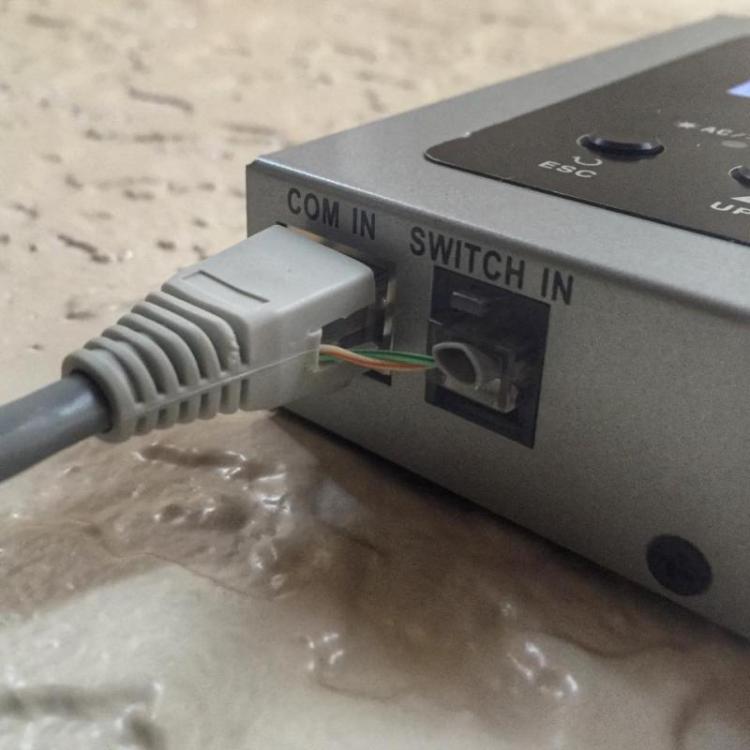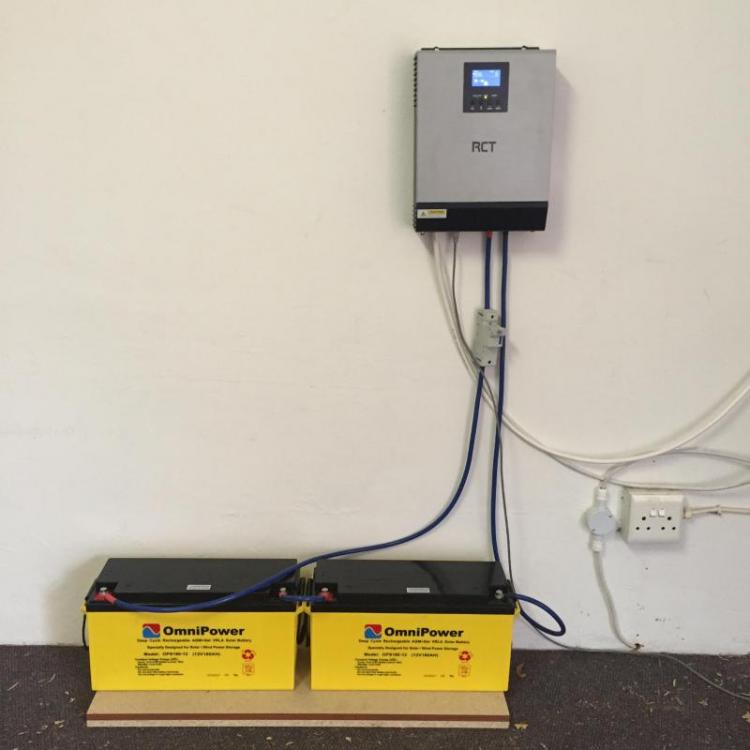
Alex
Members-
Posts
16 -
Joined
-
Last visited
-
Days Won
1
Content Type
Profiles
Forums
Gallery
Blogs
Events
Store
Downloads
Everything posted by Alex
-
Basically a busbar is a copper plate. You connect all + terminals to one copper plate and all the - terminals to another copper plate. Then from there you take a cable to the inverter. Here is an example of one: Solarwize 1000A Bus Bar Combiner Box 10P
-
TjObie could you please explain how you achieved this?
-
Same I’ve wanted a Victron BMV for years but couldn’t afford one. The SmartShunt is a new product (never seen it before) it’s the BMV without the display which connects via Bluetooth. Got one for R2100 over Black Friday. Worth the years of waiting, gives me reliable information.
-
The only way to know for sure to a degree of accuracy is to track the amps in/out of the battery, voltage trackers will give you an estimate. LifePO4 is more stable than Lead-Acid in term of voltages so it should give you a good idea but I wouldn't trust these on Lead-Acid batteries. I recently got myself a Victron Energy SmartShunt 500A/50mV, lovely piece of equipment!
-
Hi, I build a DIY 24V 100Ah LifePO4 battery with a 60A BMS for my MUST inverter. What is the recommended charge voltages for LifePO4 batteries? See attachment please. Battery stop discharging voltage Battery stop charging voltage Battery low voltage Battery high voltage Float voltage Absorption voltage Thank you.
-
Staffix sells wireless transmitters/receivers (think I paid like R300) which I connected to a output on my alarm to open my gate. A possible solution as well. This transmitter: https://www.geewiz.co.za/transmitter/62540-et-sw43-1-micro-wired-transmitter.html
-
Nice I see aicc.org.za announced it's is now open source, this is the way to go in my opinion, open source collaboration is always the best.
-
Jakes you probably meant "induction" cooking? R4000 for two plates seem a bit steep you can buy a two plate induction stove at R1999 on Yuppiechef and Snappy Chef sells the 2 plate for R2999 on their site, they saw you coming You don't need special pots and pans any magnetic pot will work so if a magnetic stick to the bottom of your pot it works. Induction stoves are cool and they work fast but why not just get a gas stove? Once you go gas you can never go back to electricity. The perfect thing for you would be the Miito, this was a Kickstarter that raised R12 million to fund. If you're a DIY person it should be pretty easy to make your own Miito, it's basically an induction stove, a metal rod with some rubber on the top. https://www.kickstarter.com/projects/747044530/miito-the-sustainable-alternative-to-the-electric/description
-
You'd use the dry contact to send commands to your Axpert, see page 10 in the manual for more details, I'm not sure if can turn the unit on/off via the dry contact. The remote panel uses basic CAT5 network cable you can extend it if you like. I have mine running 20m through the roof to my office, you just have to make your own RJ45 connectors at the ends which is dead easy. Instead of running two cables from the remote to the dry contact the Axpert only uses 4 wires for its COM, I used one CAT5E cable and use the spare wires for the dry contact (see attached pic) however I have never used the switch to be honest haven't had time to play with it, I only wired it up.
-
The scaffolding scene 'shocked' me to the core! That's gruesome.
-
It's not a new model it's the same model, they only swap out the interface board to USB. If you buy the remote unit it comes with a RJ45 board which you swop out with your USB board. I prefer RJ45, I have my remote unit running 20m ovet CAT5E to my office then you simply run a serial to USB into PC from the remote. http://www.geewiz.co.za/inverters/12720-axpert-remote-control-panel.html
-
What 12v lighting options are available for high output light options?
Alex replied to flatfourfan's topic in Lighting
....or buy LED T8 tubes from ACDC Express? The 220V LED T8 tubes are around +/- R250, you get them in 12DC. A 5 foot tube gives about 1900 lumen. These fit in regular florescent housing with the ballast bypassed. Most LED's sold are 12V with 220V transformers simply remove transformer and you have 12V. Some models have build in motion sensors. I replaced all my florescent lights with these. Catalogue - Page 18. http://www.acdc.co.za/downloads/LED%20LIGHTING_Email%20Version.pdf -
Hi alistair, I had the same issue with my Axpert 3KVA. The battery capacity % is directly linked to your battery cut-off voltage setting (21V by default, calculated 10.5V x 2). The software assumes that at 21V your batteries are at 100% DOD so when you change the cut-off voltage to say 23V the software thinks your batteries are empty at 23V which they are not. The Axpert doesn't calculate SOC accurately the % will change quickly depending on load. Unless you have a battery monitor like the Victron BMV 700/702 you're driving a car without a fuel gauge but that's okay if you're willing to do a few calculations. There is nothing is wrong with your batteries or charger don't try to trick it by reducing the bulk charge voltage you will under charge your batteries, the charger doesn't look at your % reading but at voltages so if you're on AC and the battery is at 100% your batteries are actually full. The battery cut-off voltage setting when changed from default (21V) is calculated incorrectly when you switch to battery mode thus giving you the 60% SOC. I have 2x 12V 150Ah C/10 batteries connected in series: How I calculate DOD in it's simplest form. ---------------------------------------------- Formula: Volts x Amps/H = Watts/H ---------------------------------------------- In my case this is 24V x 150Ah = 3600 Watts/Hour so if I pull a average 600W load that will give me 3600W / 600W = 6 Hours but I only want to use 50% DOD so 6 H / 2 = 3 Hours with this calculation I then run a test to see what my voltage is after 3 Hours under an average 600W load. These calculations assume the inverter runs at 100% efficiency which it doesn't so I always take off 10Ah from my calculation to compensate for energy loss to be safe. Another way would be to look at the average amps/hour, the Axpert 3KVA will give you a reading eg. 25Ah @ 600W you divide this by your capacity. So if I want to use 50% DOD that will be 150Ah / 2 = 75Ah. 75Ah / 25Ah = 3 Hours @ 600W. You can also use this online calculator which takes Puekert
-
Does anybody know if EcoNavitas is legit? They have the VICTRON BMV 700 listed at R1990. http://www.shop.eco-navitas.com/products/victron-bmv-700-battery-monitor
-
Hi, some advice needed please. I have a RCT-AXPERT 3K inverter hooked up to two OmniPower AGM 180Ah 12V batteries in series. I only use the inverter as a back-up solution where I manually have to go turn on the unit in case of power failure. Now the question is should I leave the inverter connect to the AC to float the batteries 24/7 or can I turn off the inverter for a week or two and then float the batteries for a few hours every now & then to keep them topped up? How often should I run a cycle (20-50% DOD) to keep them healthy? Datasheet for OmniPower AGM OPS180-12: Constant Voltage Charge (25'C) Cycle: 14.4-14.9V (Initial current 36A) Standby: 13.6-13.8V Do this translate to 28.8V bulk charge for two in series & 27.2V float? Then lastly my inverter allows two charge settings 20A or 30A which would be better? Thanks.















